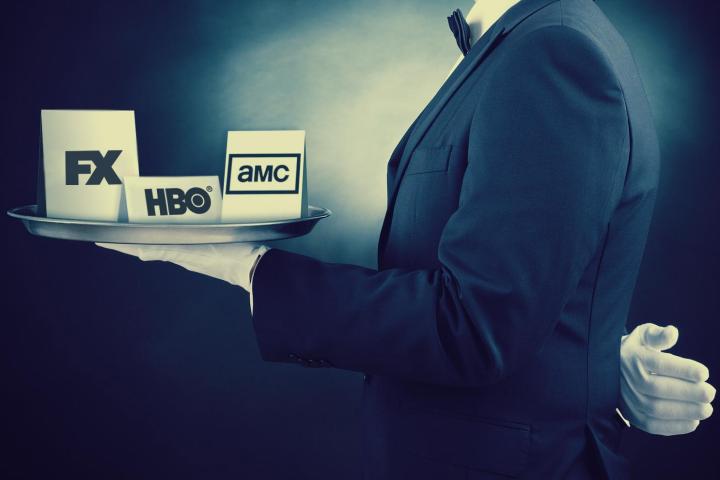
Verizon has plans to deliver individual cable channels directly over the Internet, bypassing traditional cable companies. ESPN signed a deal with the NBA to stream hundreds of games to anyone, even if they don’t get ESPN. HBO is ready to decouple from cable providers as soon as 2015. CBS is ready to do it now.
The consumers have spoken, corporate America has listened, and the gears are finally in motion to deliver “à la carte cable” – the ability to only pay for the content and channels you actually use – and that’s great.
Except most of your favorite shows would never have been born with the TV model we’re moving toward.
To help explain what I mean, let’s step back in time to July 19, 2007. You remember where you were that night, don’t you? Of course you do! That’s when Mad Men premiered. You were at home watching it like all of America.
CBS and HBO simply have the least to lose — if not the most to gain — in an à la carte world.
But Mad Men turned out to be a true game changer. Where earlier shows like Monk and The Closer proved basic cable could compete with broadcast networks when it came to popular, quality entertainment, Mad Men showed that basic cable could also compete with the premium channels for so-called “prestige” dramas. The show was a victory not just for AMC, but also for all of basic cable, helping to solidify a new golden age for television.
And if we had à la carte programming a decade ago, the show would not exist. Neither would most – if not all — other high-quality basic cable dramas you’ve enjoyed in the last decade. (This is where I’d use a sad face emoji if I believed in such things.)
Why? Because clumping 40-plus channels into a basic tier that everyone had to have gave each channel a substantial subscriber base, and therefore, substantial carriage fees. Would you have opted to keep AMC when it was just Bedtime for Bonzo? FX when it was just Fox reruns (but not the Simpsons)? The Family Channel (now ABC Family) when it was mostly a home for The 700 Club? What about BET or Lifetime if you’re outside their demographic?

If people opted only into the channels they felt they’d watch most when they first signed up for cable, the revenue simply wouldn’t have been there for edgier, riskier shows that have since defined the medium. Non-premium cable never would’ve ascended to where it is now. Broadcast would still dominate the ratings and premium channels still would have a monopoly on “prestige.” You want to know why CBS (a broadcast channel) and HBO (a premium one) are among the first to throw their hats into the à la carte ring? There’s your answer. CBS and HBO simply have the least to lose — if not the most to gain — in an à la carte world.
It’s funny. Cable prices have been steadily increasing over the last ten years, angering consumers, leading to the whole cord-cutting movement. And at the same time, quality is unarguably going up, too. Yet no one seems to want to connect those two trends. It’s as if admitting that quality is up with prices, you can no longer complain about high prices.
Would you have opted to keep AMC when it was just Bedtime for Bonzo?
Here’s how: If people start cutting cords in large enough numbers, it will send cable providers into panic mode. And when major corporations panic, consumers suffer. À la carte programming is a great option in theory, but it’s a terrible thing to force upon people, which could happen in a worst-case scenario. People who still want the simplicity of the traditional cable experience could wind up paying more for less. Likewise, cord cutters could find their options a lot less appealing when the networks and studios producing their favorite shows have to drastically cut costs (thanks to a noticeable drop-off in subscriber revenue).
Netflix and Amazon can’t make up for the sudden decimation of a dozen channels on their own. It’s like when the home-video market for movies started drying up in the mid-2000s. How did Hollywood studios respond to that sudden loss of revenue? They reduced the number of movies they made. Likewise, suddenly forcing every basic channel to compete in The Hunger Games could bring this “golden age of television” to a quick and tragic end.
Now for the good news: As far as the quality of episodic television goes, the genie is out the bottle. Thanks to high-quality content produced in the last decade – subsidized by people who didn’t even watch them — the bar has been forever raised. Also, despite all the attention cord cutting is getting, close to 85 percent of all American households still subscribe. Thanks to the recent trend against gluten, I wouldn’t be surprised if more Americans currently pay for cable than eat bread at this point.
So, yes, the medium of television is becoming the “the medium formerly known as television,” but the shift is much more gradual than it would’ve appeared a few years ago. The system isn’t going to change overnight, and that’s a very good thing, allowing both cord-cutting early adopters and cable stalwarts the best of both worlds.
Unless the Comcast-Time Warner merger happens. Then we’re all really screwed.


